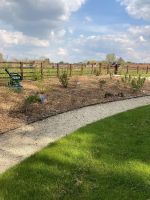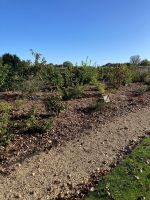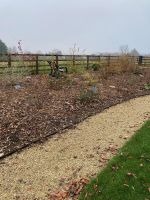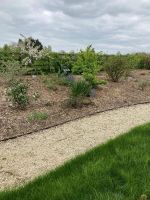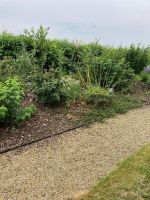Berry Close
Welcome to Berry Close Charitable Trust
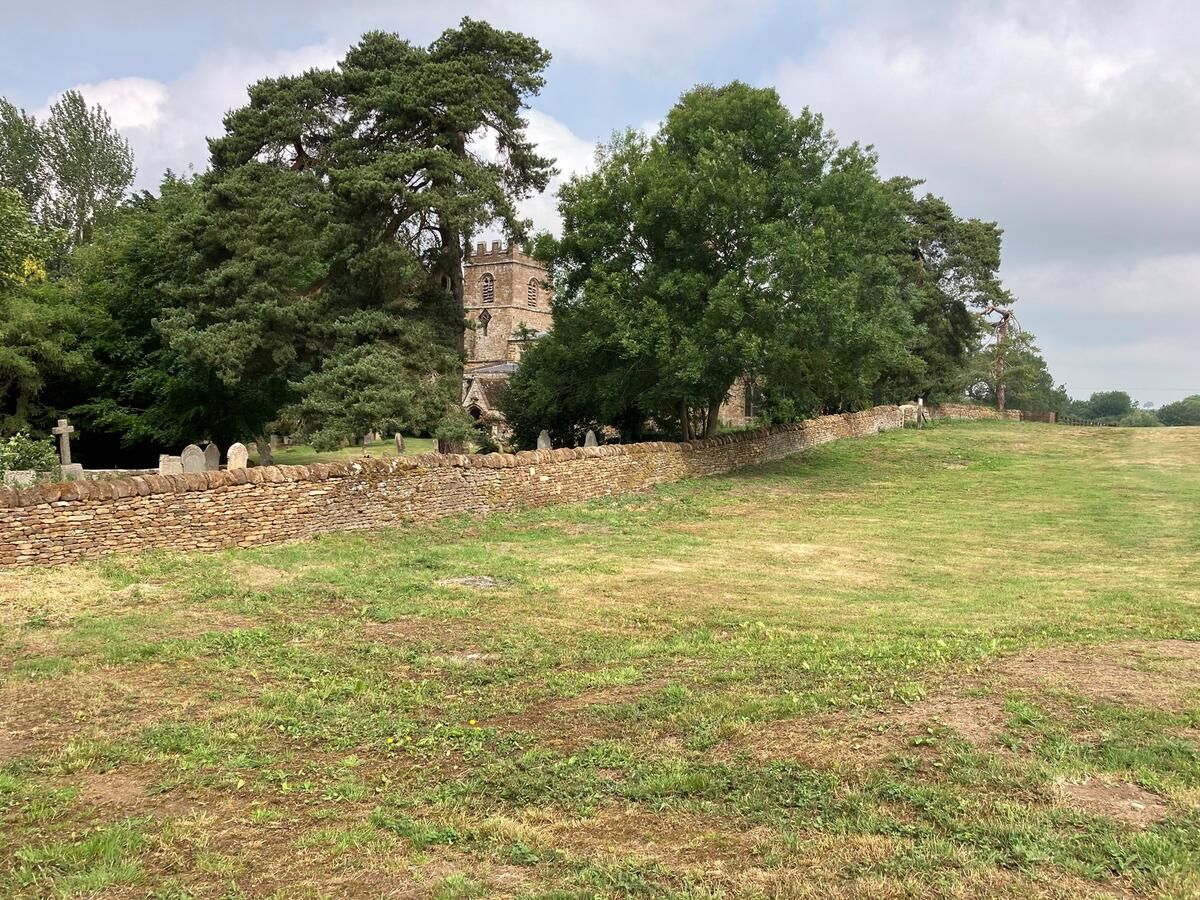
Berry Close is a 10 acre open space in the middle of Chacombe, a few miles from Banbury. The land was generously donated to the village as an amenity in the will of Mrs Eileen Bennett, in memory of her late husband, Tim.
The land is owned by Chacombe Parish Council, but managed by a Trust, the Berry Close Charitable Trust. All residents of Chacombe are welcome to join the Trust as Friends. The Trust is administered by a committee of Trustees who are appointed by the membership.
The Committee
-
Acting ChairmanNeil Castle
-
TreasurerFelicity Vernon
-
SecretaryAlex Fisher
-
Parish Council representativeAndy Taylor
-
TrusteePauline Lawrence
-
TrusteeGeoff Jones
-
TrusteeSue Shepard
-
TrusteeStephen Large

Close Mown Area

Flower Meadow
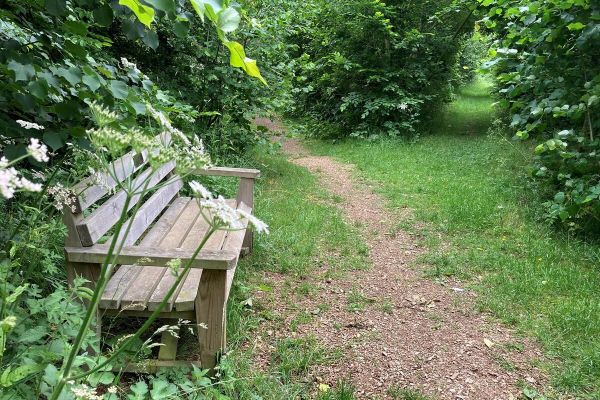
Bennets Wood

Events

Berry Close includes:
-
A close mown area, relatively level, suitable for simple games, picnics etc
-
Flower rich Meadow with closely mown paths
-
Bennett's Wood. Planted in 2012, the idea of Sian Barlow who planned, funded, and executed it. It is now a leafy retreat with winding paths which will eventually be managed to provide the village with firewood
-
Berry Close can be booked for events such as birthday parties, and is free to Chacombe residents, (see Booking Form)
Commemorative Trees
You wait 15 years for a commemorative planting and then two come at once....
In February 2022 as the Queen's Platinum Jubilee arrived the Berry Close Trustees decided it would be appropriate to celebrate the event with a suitably impressive tree. For a discussion on the choices available see the Tree Management page. After some discussion, a Wild Cherry was chosen with a work party planned for the appropriate planting time, October. Sadly the Queen died in the September, so this tree has been planted both to celebrate her Jubilee, and to give thanks for her remarkable reign (see the plaque below).
Then in March 2023 HS2 Ltd offered communities near the route of the new line a tree for planting. We agreed it should commemorate the coronation of King Charles lll and chose an oak, the connection between Kings Charles and Oaks being too good to miss.
A short but enjoyable ceremony was held on the coronation weekend to unveil the two commemorative plaque, with Dr Stephen Large, BCCT's chairman from its foundation until last year, doing the honours before an appreciative audience.
Special Thanks to Felicity Vernon, Pauline Lawrence, Andrew Taylor and Neil Castle without whom none of this would have happened.
The appreciative crowd enjoying the ceremony and the fine weather - 7th May 2023


Wild Cherry after planting in March 2023

Cherry Plaque -date is jubilee

The shortly to be mighty oak with Dr Stephen Large

The oaks plaquem the first time most of us had seen the new royal mongram
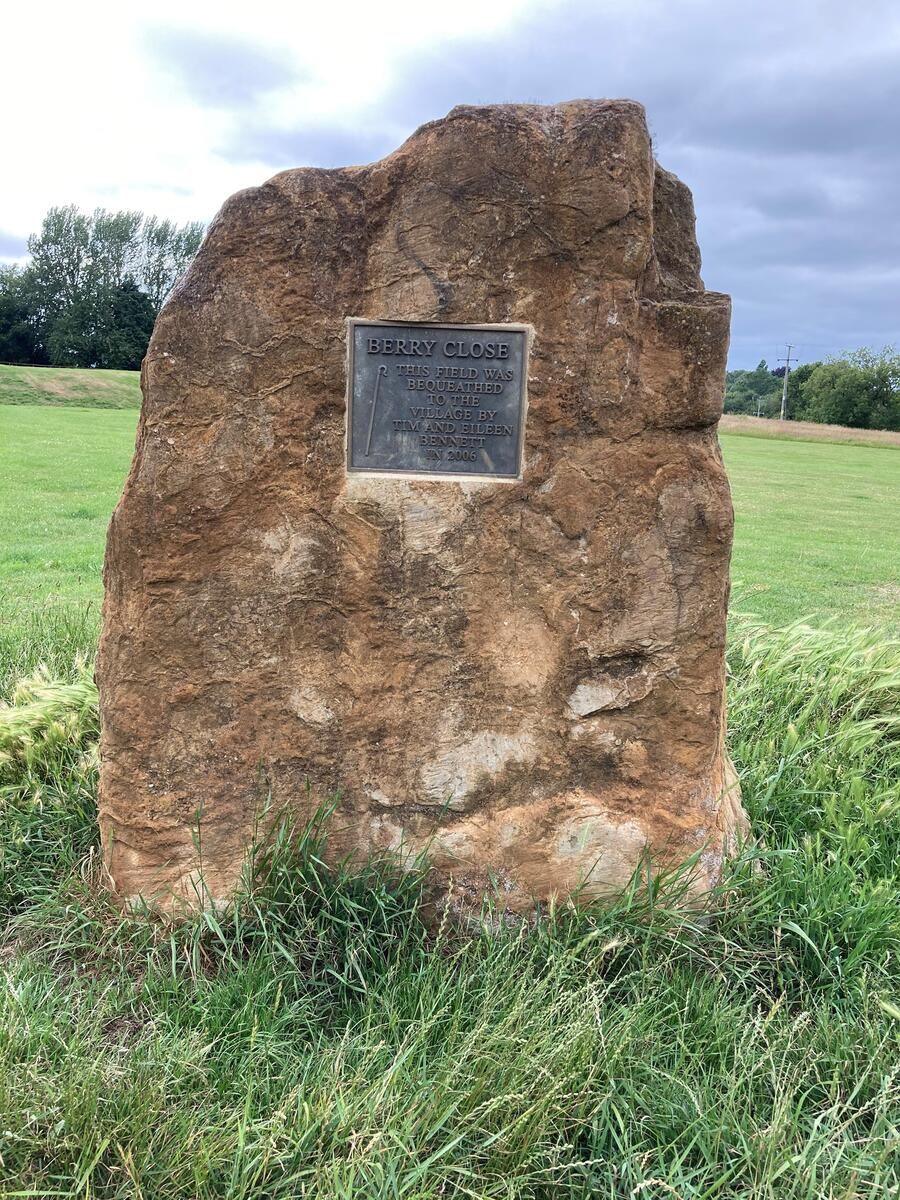
Commemorative Stone
The Parish Council decided that the generous bequest of Berry Close to the village should be marked by a permanent structure.
The rural nature of the field determined that it should be something in keeping so, after many suggestions and abortive attempts at finding something, it was fortuitous that the Banbury Flood Alleviation Scheme was under construction! Having received an invitation to have a look at what was going on and not to miss an opportunity I soon spotted piles of huge rocks and surely we would be able to find something in there that would be just what we were looking for.
After a chat with Geoff Jones we returned to the site and as we disembarked from the 4x4 in our hivis waistcoats and hard hats it was almost the first large rock we saw but we carried on looking, as you do, thinking there will be something better but eventually went back to our first choice! How were we going to get this 2 ½ ton piece of local rock back to Chacombe let alone erect it?
The Environment Agency kindly offered to deliver it. It was washed and loaded and delivered to the field where it lay for several years. It was eventually erected in 2015 by Robert and Richard Tustian but before that, as a condition of the Planning Permission, there needed to be some archaeological excavation of the site and a Community Dig was led by Geoff Jones and Polyolbion Archaeology. More about the archaeology of Berry Close can be found on this website.
The scale of the excavation was very appropriate for the size of the hole needed to accommodate this huge stone! There was now another delay before the plaque was purchased and finally attached to the stone in 2017 by Charlie Johnson of DC Building Services. Sometimes the wheels of democracy move very slowly. We are very grateful to all the people and organisations who gave so willingly of their time and resources to make the commemorative stone and it’s plaque an appropriate reminder of the generous gift from Tim and Eileen Bennett.
Hopefully it will be there for many years to come
The Burial Ground
Although not specifically mentioned in Mrs Bennett's will, it was known that her intention was to give a small piece of the Close adjacent to the existing churchyard to serve as an extension burial ground. The bureaucratic obstacles to carrying out her wishes were immense, but a team led by the indefatigable Brian Moore succeeded in overcoming them. The result is an area to the north east of the old churchyard which has been laid out as both burial ground and memorial garden planted by volunteers. It is now formally owned by the Church and was consecrated as soon as Coronavirus restrictions allowed (see below).

Consecration A fitting conclusion to the efforts of many, the Burial Ground was finally consecrated by Bishop John on the 3rd August 2020. Here he is seen delineating the bounds of the site, with appropriate Covid 19 precautions

Commemorative stone marking the consecration, note the reconstructed churchyard wall behind
The Churchyard Project Story
No problem can withstand the assault of sustained thinking… Voltaire ( 1694- 1778)
The Churchyard project has been a fascinating challenge and what the project team learned along the way some of you may find interesting! For the project to be approved and completed the following entities had to approve; Chacombe Parish Council (CPC), Parish church council (PCC), Berry close trustees(BCCT) , Charity commission, Peterborough church Diocesan, Church rector, South Northamptonshire Council (Inc Archaeology and Environmental agency) and most importantly villagers, who were persuaded to part with their hard earned cash. A daunting task as these organizations are fairly independent and have different operating speeds usually involving several months depending upon their meeting schedule.
In addition to these approvals the CPC considered that the will of Mrs. Bennett had bequeathed Berry Close to the village on the understanding that the land could only be used as a village Amenity. The CPC consequently took the view that the Church was only relevant for a small village minority and could also not consequently be classified as an amenity. They were understandably cautious as any wrong actions could open the CPC to problems from the Charity commission as Berry close was a registered charity and also potentially claims from the other beneficiaries of the will of Mrs. Bennett. So, how to deal with these valid objections. As a result of extensive internet research, it was established that the Church and the Churchyard under the law are separate entities. The Church being for those that worship there but the churchyard is open for all villagers to use and in particular all villagers have the right to be buried in the Churchyard providing they are residents, or actually die, In the village regardless of religious beliefs . So that dealt with the minority objection as that argument only applied to the Church building!
The definition of Amenity was very interesting as from our understanding of local planning laws there is not a generally accepted definition as related to areas and services in villages. The reality being that if the local authorities deem it to be an amenity, within some very broad guidelines, then it becomes an amenity. The project team and BCCT embraced this concept and declared the Churchyard an Amenity. Care has to be taken about how to use the space, it is important to understand the difference between a graveyard (Just for burial purposes) and a Churchyard which has benches, Garden areas etc. The project team were able to find many examples of large local authorities declaring their churchyards as Amenity areas and being actively encouraged to develop the space for a wider use. Having benches where folks can sit and reflect makes a difference!
Churchyard and Amenity became very important words.
This provided the project team with the confidence to go ahead and seek planning permission from the county council, which was obtained after a professional, and expensive, archaeological dig was carried out. Permission did have a few conditions, for example to leave the wavy ground in the northern end as evidence of Archaeological activity below ground and a declared planting scheme had to be submitted. One particularly relevant request was to leave the old dilapidated north to south boundary wall in its current state or to reinstate it as before, in case anyone was wondering we are not able to remove what looks like a pile of stones. We have plans, subject to approval from the Church, to partially reinstate the wall.
With planning permission granted and the amenity definition established we had to obtain permission from the Charity commission to transfer the land to the church free? The argument we made was that the new land could be defined as an Amenity, as required by the Bennett will, and the charity commission laws allow Charities to transfer assets between charities free of charge if for a like-minded purpose. We explained that the existing churchyard being under the control of the Church as a registered Charity could qualifiy as a like-minded charity. The Charity Commission accepted these points so we were now in a position to transfer the land to the church.
The process of land transfer was fairly straightforward but lengthy and was eventually achieved with some of us learning a new word. Faculty. This is the term for the church to grant permission for work to be done on its land and in particularly in Churchyards. The obtaining of a Faculty is time consuming and can take months, but it is important because carrying out work on Churchyards without a Faculty is potentially a criminal (as against civil) offence with serious consequences. However, we did find an exception for perimeter walls which can be made good without a faculty which enabled the committee to organize for the old section of the southern wall to be repaired.
We also had a timing issue as once the extension land had been consecrated it becomes the responsibility of the church and all work required there after requires a Faculty. The project team therefore made sure all the substantial construction work was carried out before the land was consecrated and whilst still under the approval of the Berry Close trustees. All the above involved dealing with laws, processes, bureaucrats etc. and a lot was learned. What we already knew, and it was nice to be reminded, was that a highly motivated minority can get things done and when a project inspires the imagination of folks then help comes from many and various sources for which we remain grateful and believe this was the main reason this project was successfully completed.Thank you to everyone involved, personal and professional. Churchyard Project team. SEPT 2020
Archaeology
Chacombe Archaeology by Geoff Jones
My mother-in-law, Betty Cameron, inspired me as an incomer in the 1970s but also inspired a number of others who were students of hers at Chacombe School in the 1960s to become interested in the past history and archaeology of Chacombe. Ian Williams, for example, was taught by her and researches Chacombe's early history from every aspect. I concentrate on archaeology.
Betty was always fascinated by Berry Close and especially the 'mysterious' mound near the Church. In her early childhood in the 1920s she would play in the the ditch around the mound calling it The Secret Valley. From her I heard of the various and speculative origins for the mound that residents had suggested.
In the 1980s the government carried out a specialist survey of all known archaeological sites around the country. The conclusion for Berry Close was that the mound was probably a platform for a medieval manor house and that in much of the rest of Berry Close there were associated buildings. Recent archaeology has proved that they were quite correct about the mound. Surface undulations and a geophysical survey of the field suggests that they are likely to be right about associated buildings and trackways between them.
Also in the 1980s a resident of Silver Street and passionate amateur archaeologist, Joan Bowes, invited me to join her field walking to look for remains that could shed light on the past of Chacombe. This included looking at the site of Roman remains on a hill overlooking Chacombe and a possible bell-founding site on the field called Bell Land. We also found a long-abandoned dam, which just might be one of the elusive mill sites for Chacombe mentioned in the Domesday Book.
Joan and I went to see the then NCC County Archaeologist, Graham Cadman, around that time. He thought Berry Close was the most important un-excavated archaeological site in Northamtonshire. He took every opportunity to divert any air photography flight he was allowed to make to fly over Berry Close.
He was not alone in showing an archaeological interest in Berry Close. I saw Professor Mick Aston walking up Silver Street one day towards Berry Close during the period in which TimeTeam was in full flow on tv. Later, I was taken aback when I discovered that Dr. Ben Robinson, the Historic England Advisor for Sites at Risk and frequent tv presentor for various archaeological programmes, revealed to me that he knew Berry Close very well when I rang him and we had quite a discussion about the site.
Joan Bowes took the view that it was an absolute certainty that a Saxon settlement had existed in or near Chacombe village, but was very frustrated that there was not a shred of evidence even hinting at this. She died before the answer was revealed. In her view the mound was raised by the Bagley bell-founders of Chacombe, who operated in the 17th c., suggesting it was where they dug pits to cast large bells, some of which are still used in Chacombe church. We now know this is not correct and bell pits have been found behind Bell Cottage in Silver Street.
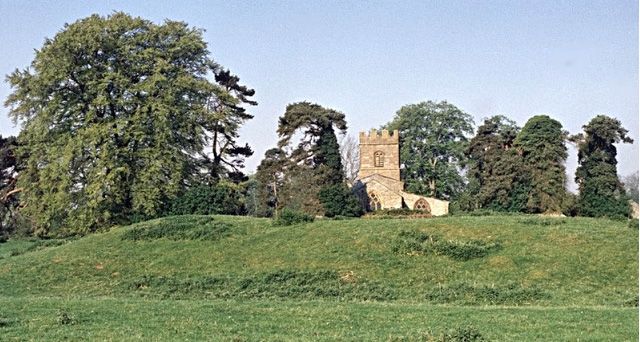
The Mound and the Church of St Peter and St Paul
Chacombe Archaeology Group
This is an informal group of interested people who are prepared to help at any archaeological dig in the Parish suitable for volunteer input. There have been two 'community digs' to date. The first in 2015 was for the 2 by 1 metres of ground that the commemorative stone occupies. The second was for the burial ground and memorial garden, with some investigation of the mound, both next to the church. We have been lucky to obtain help from a local professional archaeologist to lead them and write reports, Stephen Wass of Cropredy (Polyolbion Archaeology). I coordinated the volunteers for these digs.

